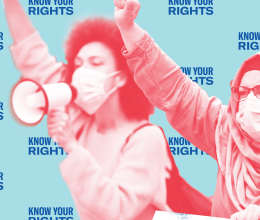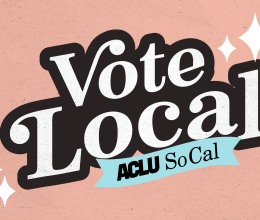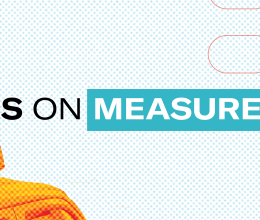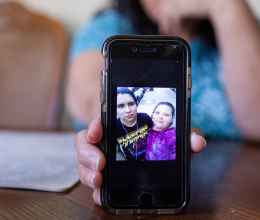
March 30, 2020
Ray Leyva, Interim Probation Chief, Los Angeles County Probation Department
Sheila Mitchell, Deputy Chief, Los Angeles County Probation Department
Reaver Bingham, Deputy Chief, Los Angeles County Probation Department
Tom Faust, Chief of Staff, Los Angeles County Probation Department
Alex Villanueva, LA County Sheriff
Michael Moore, Chief, Los Angeles Police Department
Hilda Solis, Los Angeles County Supervisor, District 1
Mark Ridley Thomas, Los Angeles County Supervisor, District 2
Sheila Kuehl, Los Angeles County Supervisor, District 3
Janice Hahn, Los Angeles County Supervisor, District 4
Katherine Barger, Los Angeles County Supervisor, District 5
Jackie Lacey, Los Angeles County District Attorney
Ricardo Garcia, Public Defender, County of Los Angeles
Erika Anzoategui, Director, LA County Alternate Public Defender’s Office
Judge Kevin Brazile, Presiding Judge, Los Angeles Superior Court
Judge Victor Greenberg, Presiding Judge, LA County Juvenile Court
Judge John Lawson, Assistant Presiding Judge, LA County Delinquency Court
Judge Akemi Arakaki, Assistant Presiding Judge, LA County Dependency Court
Max Huntsman, Inspector General, Los Angeles County
Brian Williams, Executive Director, Los Angeles County Civilian Oversight Commission Patti Giggans, Commissioner, Los Angeles County Civilian Oversight Commission
James Cross, President, Los Angeles County Board of Education
Debra Duardo, Superintendent, Los Angeles County Office of Education
Jim Anderson, SELPA Director, Los Angeles County Office of Education
Judge Peter Espinoza, Director, LA County Department of Health Services, Office of Diversion and Re-entry
Refugio Valle, Director, LA County Division of Youth Diversion and Development
Taylor Schooley, Senior Research and Policy Manager, LA County Division of Youth Diversion and Development
Eric Garcetti, Mayor, City of Los Angeles
Gavin Newsom, Governor, State of California
Assemblymember Reginald Jones-Sawyer, Chair, California State Assembly Public Safety Committee
Senator Nancy Skinner, Chair, California State Senate Public Safety Committee
Senator Toni Atkins, President Pro-Tem, California State Senate
Assemblymember Anthony Rendon, Speaker, California State Assembly
To the officials responsible for the health, safety, and due process rights of youth under the custody and supervision in Los Angeles County and other youth who are impacted by arrest and detention:
We write to supplement the requests we submitted in our March 16, 2020 letter (attached here for your reference) about young people who are incarcerated and amongst the most vulnerable during the COVID-19 outbreak. In light of the worsening COVID-19 pandemic, we reiterate our requests from the March 16 letter and submit this letter urging Los Angeles County officials, Probation, and the Juvenile Court to release as many young people who are incarcerated in the County juvenile camps, halls, and other facilities as possible to protect their safety, dignity, and human rights.
For the few who will remain in detention, LA County Probation must ensure that youth can communicate regularly with their families, receive updates on the COVID-19 pandemic when requested through reliable sources, are not placed in solitary confinement except in accordance with state law (and then only for four hours or less, or when other interventions are exhausted), and receive health and mental health prevention and treatment. Further, for the few students remaining, Los Angeles County Office of Education must develop instructional solutions that both address the public health concerns and fulfills their obligation to provide youth with a meaningful and equitable education. In particular, in accordance with guidance from the U.S. Department of Education Office for Civil Rights and the California Department of Education, LACOE must maintain services for students with disabilities in the camps and halls pursuant to their Individualized Education Programs.
The Extraordinary and Unprecedented Public Safety Risks Posed by COVID-19
As you know, the COVID-19 pandemic is spreading across the world exponentially. The Center for Disease Control (“CDC”) confirms that the virus spreads amongst the population “easily and sustainably.”1 COVID-19 is spread by both symptomatic and asymptomatic people, and, according to current estimates, an infected person will spread the disease to between two and four others on average.2 Indeed, under certain extreme conditions, a single person can infect hundreds or thousands of community members.3 As such, the COVID-19 pandemic has proven to be extremely difficult to control. And given the exponential nature of the spread, time is of the essence, as early preventative measures are substantially more effective at reducing the number of infected people than reactive measures implemented once many people have already contracted the virus.
Once a person contracts COVID-19, the health consequences may be dire. COVID-19 can cause acute respiratory illness, pneumonia, and damage to other major organs.4 In severe cases, treatment requires intensive resources, including ventilator assistance for respiration.5 For those who do not respond to treatment or lack access to adequate healthcare due to financial cost or insufficient hospital care, COVID-19 can be fatal.6
California and Los Angeles County have suffered some of the most severe outbreaks.7 Governor Newsom and Los Angeles County officials8 declared a state of emergency on March 4, and President Trump declared a national state of emergency on March 13.9 As of March 26, Los Angeles County alone has identified 1216 cases, a figure that represents only a small number of people actually infected and that is poised to grow rapidly.10 Although COVID-19 ostensibly has had more severe health effects for older people so far, young people nonetheless are susceptible to infection, spread the virus at the same rates, and are not spared from the severe health impacts.11 Indeed, the first fatality of a person under 18 in the U.S. from COVID-19 occurred in Los Angeles County on March 24.12
Los Angeles County Must Release as Many Incarcerated Youth as Possible
The Los Angeles County Board of Supervisors, Probation, and the Juvenile Court must coordinate and release as many incarcerated people as possible to protect the health and safety of our young people and communities. Carceral settings such as the juvenile halls and camps pose particularly acute public safety concerns because of the greater density of people in confined spaces, the shared facilities and equipment, and the impracticability of practicing protective measures such as social distancing and frequent hand washing. Further, carceral settings often struggle with maintaining adequate hygiene and sanitation, and incarcerated young people suffer disproportionately from existing health conditions that render them more susceptible to infection.13 As Dr. Craig Haney asserts in his declaration recommending release as the safest measure to protect incarcerated youth amid this crisis, “COVID-19 presents penal institutions with an enormous challenge that they are ill-equipped to handle.”14
The impact of outbreaks in carceral settings extends far beyond the incarcerated population. Outbreaks also endanger correctional officers, medical personnel, educators, other staff, attorneys, and advocates who cycle through the facilities and frequently come into contact with the incarcerated population, each other, and then their families and communities. Exacerbating the situation, the juvenile facilities are currently significantly understaffed because regular staff have been calling in sick or are otherwise staying away because they recognize the afflictive health risks. As a result, staff from the field and from adult facilities are currently working in the juvenile facilities, but they are not trained to be responsive to youth issues, thus further straining the system and placing the entire population at risk.
As such, in recent days, it is unsurprising that jails and prisons across the U.S. have experienced some of the most severe outbreaks. For example, as of March 22, at least 19 incarcerated people and 12 staff members had contracted COVID-19 in Rikers Island jail complex, and dozens more had been exposed to the virus.15 That same day, a Los Angeles County facility reported the first identified case of an incarcerated person testing positive for COVID-19 in California.16 Two days later, neighboring Orange County reported its first confirmed case of an incarcerated person contracting COVID-19 in Men’s Central Jail in Santa Ana.17
Confronted with this reality, at least eight state and local court systems in Alabama, Maine, Montana, New Jersey, Ohio, South Carolina, Texas, Washington, and the District of Columbia, have already taken steps to reduce incarceration during this crisis. As explained by Montana Chief Justice Mike McGrath on March 20, releasing prisoners is necessary because, “[d]ue to the confines of [correctional] facilities, it will be virtually impossible to contain the spread of the virus.18 On March 23, thirty-four elected prosecutors signed on to a letter calling for leaders in the criminal justice system “to dramatically reduce the number of incarcerated individuals and the threat of disastrous outbreaks” of COVID-19 in carceral settings.19 The Chief Justice of the South Carolina Supreme Court ordered that everyone held on bond in a non-capital case be released, unless there exists an “unreasonable danger” or “extreme flight risk.”20 The New Jersey Supreme Court ordered the temporary release of up to 1,000 people during the COVID-19 crisis, with judges to determine whether sentences should be commuted after the outbreak subsides.21
Early indications suggest that Los Angeles County officials are willing to take the same approach. On March 22, the Los Angeles County Board of Supervisors issued an executive order directing the Los Angeles County health officer to identify “all necessary and appropriate measures to prevent the spread of COVID-19 in the jails . . . and make any orders necessary for that purpose.”22 Similarly, District Attorney Jackie Lacey instructed prosecutors “to take steps to reduce the number of people in local jails and area courthouses in an effort to slow the spread of the virus” and Sheriff Alex Villanueva released approximately 1,700 incarcerated people from jails on March 24.23
Despite actions to reduce the incarcerated adult population, the steps taken by Probation and other Los Angeles County officials have been too slow and conservative to ensure that young people and staff in the juvenile camps and halls remain safe. They have yet to release large numbers of youth from detention, which is the only effective means of ensuring safety. Aside from release, Dr. Haney explains that the likely potential measure available is to isolate the juvenile incarcerated populations, which is inhumane for any population and are substantially more harmful for youth.24 Youth are more susceptible because they are still in their developmental stages, many have histories of trauma, and all are already deprived of connections to their families and communities. In particular, isolation for students with disabilities and students with intellectual and/or emotional disabilities have the potential to cause irreparable psychological, physical, and developmental harm. Advocates working with youth in the halls and camps have confirmed the harm, reporting that youth are terrified for their safety and uncertain about the future. Finally, given their aversion to the facilities’ severe isolation practices, youth who are experiencing COVID-19 symptoms will be reluctant to notify authorities or seek medical attention. Youth will weigh the cost of solitary confinement with the risk of infecting their peers, and we fear that many, particularly those with mild symptoms, will elect to hide their condition, potentially infecting high numbers of people.
Accordingly, County officials, Probation, and the Juvenile Court must develop a plan to release immediately as many young people from the juvenile camps and halls as possible. As always, it is critical that youth are released into a safe environment. To the extent possible given the extreme circumstances, standard practice should be followed to ensure that youth are released to a safe placement. Specifically, at a minimum, the County, Probation and the Juvenile Court must:
- Stop new admissions of youth to Los Angeles County detention facilities.
- Issue a moratorium on custody and immediate release for all technical probation violations.
- Issue a moratorium on custody and immediate release for all misdemeanor and low-level felony arrests and bench warrants.
- Release youth detained at local, municipal police, and school police facilities rather than transferring them to a juvenile hall for assessment.
- Assess detained youth to determine any who are medically vulnerable and release any who are identified as such.
- Immediately release youth who are set to be released within six months.
- End the Probation Department’s policy of transferring youth from juvenile halls to camps when they turn 18 and do not maintain pre-disposition / pre-sentencing detention in juvenile hall.
- Physically separate all youth taken by law enforcement to a juvenile hall from other youth, and immediately release them to parents/guardians unless they have 707(b) charges and/or youth safety prohibit it.
- Order the Division of Youth Development and Diversion (“YDD”) to perform outreach to all 57 law enforcement agencies operating in LA County to utilize YDD and its affiliated youth programs as an alternative to transporting youth to police stations and/or juvenile halls.
- Ensure that all young people in the facilities have daily access to phone, mail, and videoconferencing and eliminate all associated fees, even in the event of a quarantine.
- Maintain compliance with existing law limiting and requiring documentation of the use of isolation but practice social distancing to the extent possible in communal areas.
- Ensure that youth have access to quality reading and materials for writing and drawing at all times to reduce the stress and mental health impacts of social isolation.
- Publish publicly and communicate to families any information about changes in procedures responding to the COVID-19 pandemic.
- Make COVID-19 testing kits readily available for all youth who remain in custody and regularly test staff members.
- Ensure that all young people who are released are connected to relevant service providers in the community, including education services as described further below.
LACOE Must Provide Adequate Education to Youth who Remain
For the youth who remain in the juvenile halls and camps, LACOE must prioritize providing meaningful and equitable education, especially to students with disabilities and English learners. LACOE’s obligation to provide education is unequivocal. On March 13, Governor Newsom issued an executive order providing that the state would continue funding public schools, including those run by counties through the duration of the COVID-19 outbreak. The order made clear that, as a condition of receiving the funding, schools must “[c]ontinue delivering high-quality educational opportunities to students through other options, distance learning and independent study.”25
Indeed, LACOE has conceded that it must continue providing sufficient educational services. On March 14, LACOE Superintendent Debra Duardo recommended that all schools in Los Angeles County close in response to the COVID-19 pandemic, emphasizing that “[o]ur focus must be on ensuring the continuity of learning,” specifically affirming that LACOE will “work with its partners in the Probation Department to ensure continuity of instruction in its Juvenile Court Schools located at the juvenile halls and camps.”26
However, despite LACOE’s purported commitment to “ensure continuity of instruction” and the California Department of Education’s (“CDE”) guidance to integrate technology-based instructional tools, the juvenile halls and camps have halted live and direct instruction since March 16 and have yet to implement adequate distance learning for all students. Some students have reported not receiving any instruction at all, while other students have reported receiving insufficient independent work packets. Before the closure, students reported receiving the same packets numerous times, forcing them to work on the same material for weeks or even months. Further, even if students receive new packets in a timely manner, independent study is not appropriate for many students, including those who are already academically behind, who have disability-related needs, who are experiential or auditory learners, or who are English learners. Independent work packets are limited compared to technology-based delivery models, which could adjust to a student’s level in real time, provide additional context where needed, and account for gaps in learning. As such, these measures wholly fail to satisfy LACOE’s obligation to provide robust distance education to the youth it serves. Indeed, the CDE recommends that local educational agencies instead consider technology-based approaches that give students an opportunity to interact dynamically with their teacher or content.27
LACOE Must Continue to Provide Services to Students with Disabilities Pursuant to their Individualized Education Programs
As LACOE implements its plan for education inside juvenile facilities, it must immediately resume services for students with disabilities. The federal government has not waived the requirements for students with disabilities to receive a free appropriate public education (“FAPE”). As such, LACOE must provide them with services consistent with their Individualized Education Programs (“IEPs”), as required by the Individuals with Disabilities Education Act (“IDEA”) and ensure equal access to educational programming for students with disabilities under Section 504 of the Rehabilitation Act of 1973 (“Section 504”). The CDE has made clear that all education providers must “do their best in adhering to IDEA requirements, including federally mandated timelines, to the maximum extent possible” and “are encouraged to consider ways to use distance technology to meet these obligations.”28 CDE states further:
When an LEA continues to provide educational opportunities to the general student population during physical school site closures, the LEA must ensure that students with disabilities have equitable access to comparable opportunities, appropriately tailored to the individualized need of a student to ensure meaningful access, as determined through the IEP process to the extent feasible. If the LEA can continue providing special education and related services as outlined in the IEP, or an agreed upon amendment to the existing IEP, through a distance learning model, they should do so.29
Despite CDE’s clear mandate to provide individualized distance learning and access to related services, LACOE has entirely halted education services for students with disabilities. Students with disabilities are – at best – receiving insufficient independent work packets that certainly fall short of the IDEA and Section 504 legal requirements for students who cannot, due to their disabilities, access the materials provided without adult assistance or accommodations. Some students with disabilities require related services, such as counseling, occupational therapy, or speech and language instruction, to receive meaningful benefit from their educational program. Clearly, none of those services can be provided through completing worksheets without any human interaction. They can, however, be provided through the use of technology-based platforms where educators or therapists can engage with students.
LACOE and Probation Must Adopt the Following Recommendations to Provide Sufficient Education to Youth in the Juvenile Halls and Camps
LACOE, in partnership with Probation, must substantially improve the way it is providing distance learning, including through creative technological solutions. By way of example, school districts and charter schools in the community have largely focused on providing instruction over the Internet, through dynamic online programs and creative uses of teleconferencing. Similarly, conditions must be substantially changed inside the juvenile halls and camps to allow Internet-based instruction and the social distancing guidelines recommended by the CDC.
Given the extended length of the school closures, LACOE must adapt its policies and begin offering students more meaningful and equitable educational opportunities. The lack of sufficient education is particularly concerning given that system-involved youth have often struggled in school and experienced harsher school discipline than their peers, leading most detained and incarcerated youth to enter the system far behind with respect to skills, grade level, and credits.
Specifically, LACOE must commit to the following:
- Adopt a detailed educational plan for each juvenile hall and camp that ensures all students are receiving meaningful and equitable distance learning. These plans must address, at a minimum, how LACOE will ensure continuity of IEPs, counseling and psychological services, behavioral intervention services, nursing services, physical therapy, speech and language, and other related services.
- Publicly release updates and detailed plans developed to respond to the COVID-19 pandemic, including through a live website consolidating the plans of all school districts within its jurisdiction that is accessible to all students, caregivers, and families.
- Provide prior written notice to families of students with disabilities outlining the student’s individualized distance learning plan including access to related services.
- Overcome any structural barriers to providing technology-based instruction and programming while maintaining social distancing guidelines recommended by the CDC and confidentiality protections, including providing portable technology such as Chromebooks or tablets with adaptive educational programming and secure videoconferencing systems. Provide all students with Internet access to expand their distance learning options to include college-level instruction and programs for those who have attained a high school diploma or GED. Support students to participate in dual enrollment with post-secondary institutions in order to increase the likelihood of college enrollment after release.
- Include families in distance instructional time by offering family restorative practice/community building circles at least once a week as part of instruction and offering parent-teacher-student conferences at least monthly to track student progress and graduation goals.
- Maintain records of instruction delivery and related services during the school closure. These records will ensure that students receive full or partial academic credit for the coursework they complete and will be reflected in each student’s school transcript.
- Create an automated system for calculating compensatory educational services that ensures students receive services in the precise amount missed, once the juvenile court schools reopen.
- Given the suspension of other education complaint processes during the school closures, establish a complaint process for students whose educational rights are violated inside juvenile detention facilities and during transition upon release, including, but not limited to, those who do not receive: meaningful distance learning, the educational programs and services mandated by their IEP, and confidential counseling and therapy sessions.
- Issue guidance to all school districts within its jurisdiction requiring the adoption and submission to LACOE of detailed plans for the continued provision of distance learning and IEPs.
- For students who are released:
- Assign every student and family an education transitions staff/case manager to ensure the educational rights for every youth released from the halls/camps are guaranteed by providing and tracking services for a minimum of 18 months.
- Coordinate immediate enrollment at a district or charter school and address any barriers to enrollment or education access such as credits, IEP services, and school records.
- Ensure students receive any devices or technology necessary to receive distance instruction from the school district for the duration of the closure.
- Maintain records and track the education enrollment status and progress of every released youth until there is record or confirmation of students’ culmination of secondary education such as receipt of high school diploma, GED, or post-secondary education/vocational program enrollment.
* * *
For the forgoing reasons, Los Angeles County officials, Probation, and the Juvenile Court must immediately develop a plan to release as many young people as possible from the juvenile halls and camps. For the few who remain, LACOE and Probation must begin providing them with appropriate education, which includes meaningful distance learning and services for students with disabilities as set forth in their IEPs.
We understand that you ultimately share our goals, and we hope that we can work together to ensure the safety and dignity of all youth in LA County. Accordingly, we ask that Los Angeles County Board of Supervisors, Probation, and LACOE contact Vivian Wong at vivian.wong@lls.edu to coordinate a conference call with the signatories to this letter this week to discuss these recommendations further.
In addition, we ask that Los Angeles County Board of Supervisors, Probation, and LACOE staff continue to attend the COVID-19 Release and Reconnection forums, the next of which is scheduled for April 8th at 2:00-3:45PM. For more information, to receive registration instructions, and to connect at any time between meetings, please contact Kim McGill from the Youth Justice Coalition at kim@youth4justice.org or (323) 327-1259. We also ask that you provide a detailed update on the progress you have made implementing these recommendations on the April 8 call forum community members.
Sincerely,
A New Way of Life
ACLU of Southern California
Alliance for Children’s Rights
Arts for Incarcerated Youth Network
California Conference for Equality & Justice
Center for Juvenile Law & Policy, Loyola Law School
Children’s Defense Fund-California
Disability Rights California
Homies Unidos
InnerCity Struggle
National Center for Youth Law
New Earth Organization
Public Counsel
Social Justice Learning Institute
Urban Peace Institute
Youth Justice Coalition
Enclosure: Coalition letter dated March 16, 2020
1. https://www.cdc.gov/coronavirus/2019-ncov/prepare/transmission.html. ↑ Go back
2. https://www.nytimes.com/2020/03/18/us/coronavirus-terms-glossary.html. ↑ Go back
3. https://graphics.reuters.com/CHINA-HEALTH-SOUTHKOREA-CLUSTERS/0100B5G33SB/index.html. ↑ Go back
4. https://www.mayoclinic.org/diseases-conditions/coronavirus/symptoms-causes/syc-20479963. ↑ Go back
5. https://www.vox.com/policy-and-politics/2020/3/17/21183263/coronavirus-us-hospitals-elective- surgeries-icu-masks. ↑ Go back
6. https://www.vox.com/2020/3/5/21165973/coronavirus-death-rate-explained ↑ Go back
7. https://www.gov.ca.gov/2020/03/04/governor-newsom-declares-state-of-emergency-to-help-state-prepare-for-broader-spread-of-covid-19/. ↑ Go back
8. https://laist.com/latest/post/20200304/coronavirus-covid-19-los-angeles-county-public-health-emergency. ↑ Go back
9. https://www.cnn.com/2020/03/13/politics/donald-trump-emergency/index.html. ↑ Go back
10. https://www.dailynews.com/2020/03/26/coronavirus-in-la-county-9-new-deaths-559-new-cases. ↑ Go back
11. https://abcnews.go.com/US/40-hospitalized-coronavirus-younger-54-cdc/story?id=69681304. ↑ Go back
12. https://www.latimes.com/california/story/2020-03-24/los-angeles-young-person-coronavirus-death. ↑ Go back
13. https://www.aclum.org/sites/default/files/field_documents/amici_letter_-_public_health_experts_-_cpcs_macdl_v._chief_of_trial_court_1.pdf. ↑ Go back
14. https://drive.google.com/file/d/1YNs4SVe2q6lq_XLhKvkHv5xqUXxtCTEi/view. ↑ Go back
15. https://thehill.com/homenews/state-watch/488855-top-official-says-new-york-city-coronavirus-jail-outbreak-is-a-crisis.↑ Go back
16. https://www.mercurynews.com/2020/03/22/coronavirus-california-state-prison-inmate-positive-for-covid-19/.↑ Go back
17. https://www.latimes.com/california/story/2020-03-24/orange-county-jail-inmate-tests-positive-for-the-coronavirus.↑ Go back
18. https://courts.mt.gov/Portals/189/virus/Ltr%20to%20COLJ%20Judges%20re%20COVID-19%20032020.pdf?ver=2020-03-20-115517-333. ↑ Go back
19. https://fairandjustprosecution.org/wp-content/uploads/2020/03/Coronavirus-Sign-On-Letter.pdf. ↑ Go back
20. https://www.sccourts.org/whatsnew/displaywhatsnew.cfm?indexID=2461. ↑ Go back
21. https://www.aclu-nj.org/news/2020/03/23/nj-order-release-people-county-jails-breaks-new-ground-covid. ↑ Go back
22. https://www.aclusocal.org/sites/default/files/los_angeles_county_board_of_supervisors_20200323_covid19_jails_final_executive_order.pdf. ↑ Go back
23. https://www.cbsnews.com/news/inmates-released-los-angeles-county-coronavirus-response-2020-03-24/. ↑ Go back
24. https://www.aclu.org/sites/default/files/field_document/us1012webwcover.pdf.↑ Go back
25. https://www.gov.ca.gov/2020/03/13/governor-newsom-signs-executive-order-ensuring-state-funding-for-schools-even-in-event-of-physical-closure/.↑ Go back
26. https://www.lacoe.edu/Home/News-Announcements/ID/4412/Los-Angeles-County-schools-chief-recommends-school-closure-in-response-to-COVID-19.↑ Go back
27. https://www.cde.ca.gov/ls/he/hn/distancelearning.asp.↑ Go back
28. https://www.cde.ca.gov/ls/he/hn/specialedcovid19guidance.asp.↑ Go back
29. Id.↑ Go back






